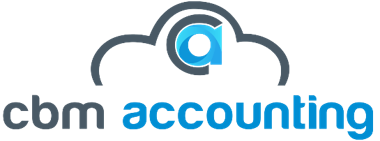If you operate a business, you have undoubtedly been waiting for HMRC to announce the 2021/22 income tax, mandatory payments, and national insurance contribution levels (NIC). These are just several of the things that were thrown off during an unusual 2020, and it has caused some confusion because the Chancellor would normally announce the NIC criteria and rates in conjunction with the Autumn Statement or the Autumn Budget.
The 2020 Autumn Statement was canceled due to the COVID-19 pandemic. Although we won’t know for sure how rates will be impacted until the Budget in March 2021, the finance secretary to the Treasury, Jesse Norman, did make a ministerial statement about increases in the NIC levels back in December last year:
“In agreement with previous reports outlined in the Spending Review document on November 25 (CP 330), the Government will use the September Consumer Price Index (CPI) estimate (0.5 percent) as the basis for determining all National Insurance limits and thresholds, as well as the rates of Class 2 and Class 3 National Insurance contributions, for the fiscal year 2021-22. The National Insurance rates and criteria for 2021-22 will be published in the House Libraries.”
2021–2022, Class 1:
Class 1 National Insurance Contributions (£ per week): Employees and Employers:
| 2021-21 | 2021-22 | |
| Limit on weekly earnings | £120 | £120 |
| Weekly main criterion | £183 | £184 |
| Weekly secondary criterion | £169 | £170 |
| An upper limit on earnings | £962 | £967 |
For those under the age of 21, the upper secondary
threshold is £962 £967
For those under the age of 25, the upper secondary threshold is
For apprentices. £962 £967
2021–2022 Class 2:
Class 2 National Insurance Contribution: Self-employed (£ per week)
| 2021-21 | 2021-22 | |
| The profit barrier is low (£ each year) | £6,475 | £6,515 |
| Contribution rates in Class 2
Profits per year (pounds sterling) |
2020-21
£ per week |
2021-22
£ per week |
| Below a certain level of profit | £ 3.05
Voluntary |
£3.05
Voluntary |
| Above small profits threshold | £3.05 | £3.05 |
During the years 2021/22, the following rules apply to self-employed people:
- The £6,475 small profit threshold has been raised to £6,515
- The weekly fee remains unchanged at £3.05 per week.
2021–2022, Class 3:
This is the type of NIC that may be used to fill in any gaps in an individual’s NIC record. You can look for gaps in your tax account, and you may need to make voluntary payments to close them. The weekly fee will improve from £15.30 to £15.40 in 2021/22.
Voluntary Contributions (£ per week) for Class 3 NIC;
| 2020-21 | 2020-22 | |
| Voluntary contributions | £15.30 | £15.40 |
2021–2022, Class 4:
When self-employed profits exceed the lower profits limit (LPL), class 4 NIC is due. The statistics for 2021/22 are as follows:
- The LPL has risen to £9,568 from £9,500.
- The maximum profit threshold has been raised from £50,000 to £50,270.
Self-employed (£ per week) NIC (Class 4);
| 2020-21 | 2020-22 | |
| Lower profits limit | £9,500 | £9,568 |
| Upper profits limit | £50,000 | £50,270 |
Table of Contents
Implications for income taxes:
The basic rate and personal allowance:
Pensions and benefits provided by the state:
Get assistance with taxes and bookkeeping from CMB Accounting:
Implications for income taxes:
The upper-end limit for class 1 has been increased by £270, from £50,000 to £50,270. Since 2007, the upper-end limit has been linked with the income tax higher rate threshold, resulting in a higher rate threshold of £50,270 for English, Northern Irish, and Welsh taxpayers.
The basic rate and personal allowance:
The 2020 Economic Survey called for an increase in the personal income tax limit and a higher rate threshold for the years 2022 and 2023, which corresponds to the September consumer price index number of 0.5 percent. As a result, the personal allowance will rise from £12,500 to £12,570 in 2021/22, and the basic rate threshold will be £37,700.
Implications for pensions:
The lower-end limit for class 1 remains constant, therefore £120 per week will apply. That works nicely for the statutory payout level of average weekly wages. It is also safe to anticipate that the lower qualifying earnings band for employer pensions will remain unchanged.
Pensions and benefits provided by the state:
In November, the Secretary of State for Work and Pensions released a statement with the following key consequences for state pensions and benefits:
- Starting on April 12th, basic and new state pensions will increase by 2.5 percent.
- Other government benefits will rise in line with the consumer price index, which is now at 0.5 percent.
(SSP) Statutory Sick Pay:
The statutory sick pay rate will increase from £95.85 to £96.35 per week for average weekly earnings equal to or over the lower end limit. From April 6, the new statutory sick pay rate must be paid.
| Unrounded daily rates | No. QDs in week | Number of days due | ||||||
| 1 | 2 | 3 | 4 | 5 | 6 | 7 | ||
| £ | £ | £ | £ | £ | £ | £ | £ | |
| 13.7643 | 7 | 13.77 | 27.53 | 41.30 | 55.06 | 68.83 | 82.59 | 96.35 |
| 16.0583 | 6 | 16.06 | 32.12 | 48.18 | 64.23 | 80.30 | 96.35 | |
| 19.2700 | 5 | 19.27 | 38.54 | 57.81 | 77.08 | 96.35 | ||
| 24.0875 | 4 | 24.09 | 48.18 | 72.27 | 96.35 | |||
| 32.1167 | 3 | 32.12 | 64.24 | 96.35 | ||||
| 48.1750 | 2 | 48.18 | 96.35 | |||||
| 96.3500 | 1 | 96.35 | ||||||
Pay for Parents:
Even while statutory ill pay must be paid from the beginning of the new tax year, other statutory payments begin on the first Sunday in April — which in 2021 occurs on the fourth. The weekly amount for parental benefits has increased from £151.20 to £151.97.
Get assistance with taxes and bookkeeping from CMB Accounting:
Taxes can intricate, and making a mistake on your tax return may result in a penalty. CMB Accounting can assist small and medium business owners, as well as self-employed individuals, in achieving their goals. We can also assist you with your VAT returns. Self-assessment, corporation tax, and business expenditures
Please contact us for more information, or use our fast accounting quotation option and we will contact you shortly.




